Austria
As for such great country with quite violent military history Austro-Hungary produced only a few distinctive bayonet models. There had been an “ordnung” and not to much variety, at least in the second half of 19th century. Before that time the variety of Austro-Hungarian socket bayonets was redundant.

Austrian socket bayonets
A few distinctive models of socket bayonets mainly with sword blade are on the picture to the left. They were designed for unknown muskets, as well as for Augustin, Lorenz, Furwith and Werndl rifles.
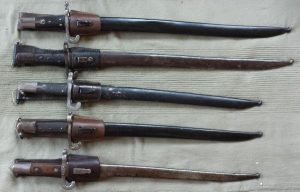
Werndl rifle bayonets. First there were yatagans. The first was Lorenz 1864 Jaeger Stutzen, produced by Blackmann or Jung. Unfortunately I have none, it is a rare bayonet. Then ensued 3 models for Werndl rifles. Model 1867, 1870 and 1873. All were manufactured in regular and NCO (non comissioned officer) versions. The NCO hilt had special loop on the pommel, where the knot was fixed. Models 1867 and 1870 initially appeared in long version around 720mm, which were later shortened. Few long ones survived, probably more 1867 then 1870. Model 1873 was produced in one final lenght of 605mm. Some of this bayonets were later adapted for Mauser 1888.
The picture above shows the whole family, from above: Werndl 1867 with characteristic ball on the crossguard, then long version of 1870, then short version of M1870 NCO, then M1873 with internal catch spring and the last one for comparision is Mannlicher 1885.
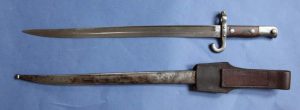
The last Austrian yatagan was model 1885 or 1886 for Mannlicher rifle. They were a bit lighter then Werdnls had similar blade and almost identical scabbard as Kropatschek yatagan mede by Steyr for Portugal. This bayonets are rare. They also had NCO variant. There is some variety between them as far as material for grips and number of grip rivets is concerned. In some the crossguard was fixed with two prominent rivets, in others no.
After some time I can add a picture of the whole family on unshortened Werndls.
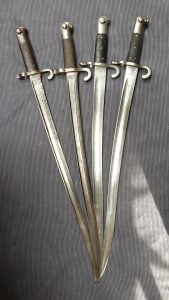
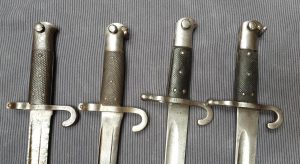
Then came the era of knife bayonet. This was initially Mannlicher M1888, M1890 and soon later Mannlicher 1895 which was similar in design but generally smaller and lighter. This bayonets had been produced in tremendous amounts for many years, and was main bayonet of Austro-Hungarian army during WWI. In this years there were also M1895 ersatz, which were probably the most primitive pieces of steel for killing.
Bayonet collectors often tend to make some exceptions and gather also short swords, bolos, machetes or faschinenmesser. Austro-Hungary manufactured for years model 1853 pioneer faschinenmesser, for own army and for export. One the picture below it is also presented with ersatz steel scabbard. Slim version is for cadets. Just before WWI is was replaced by lighter and more crude model 1913 (quite rare) and shortly later 1915.
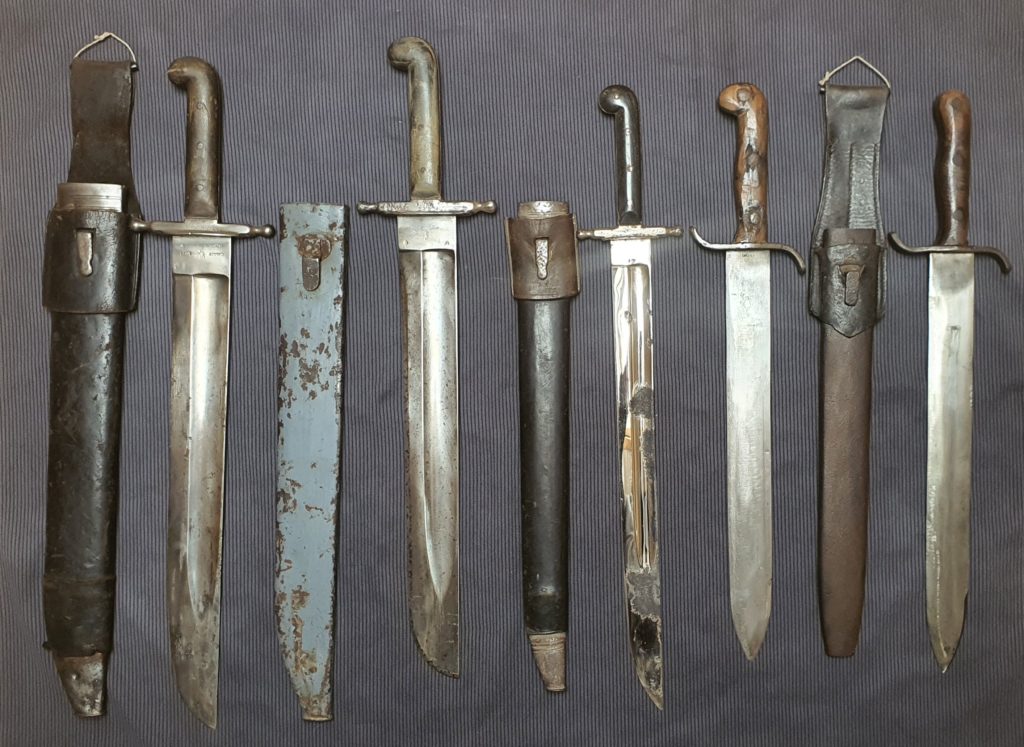
Austro-Hungarian faschinenmesser – all models
Showing 1–16 of 44 results














